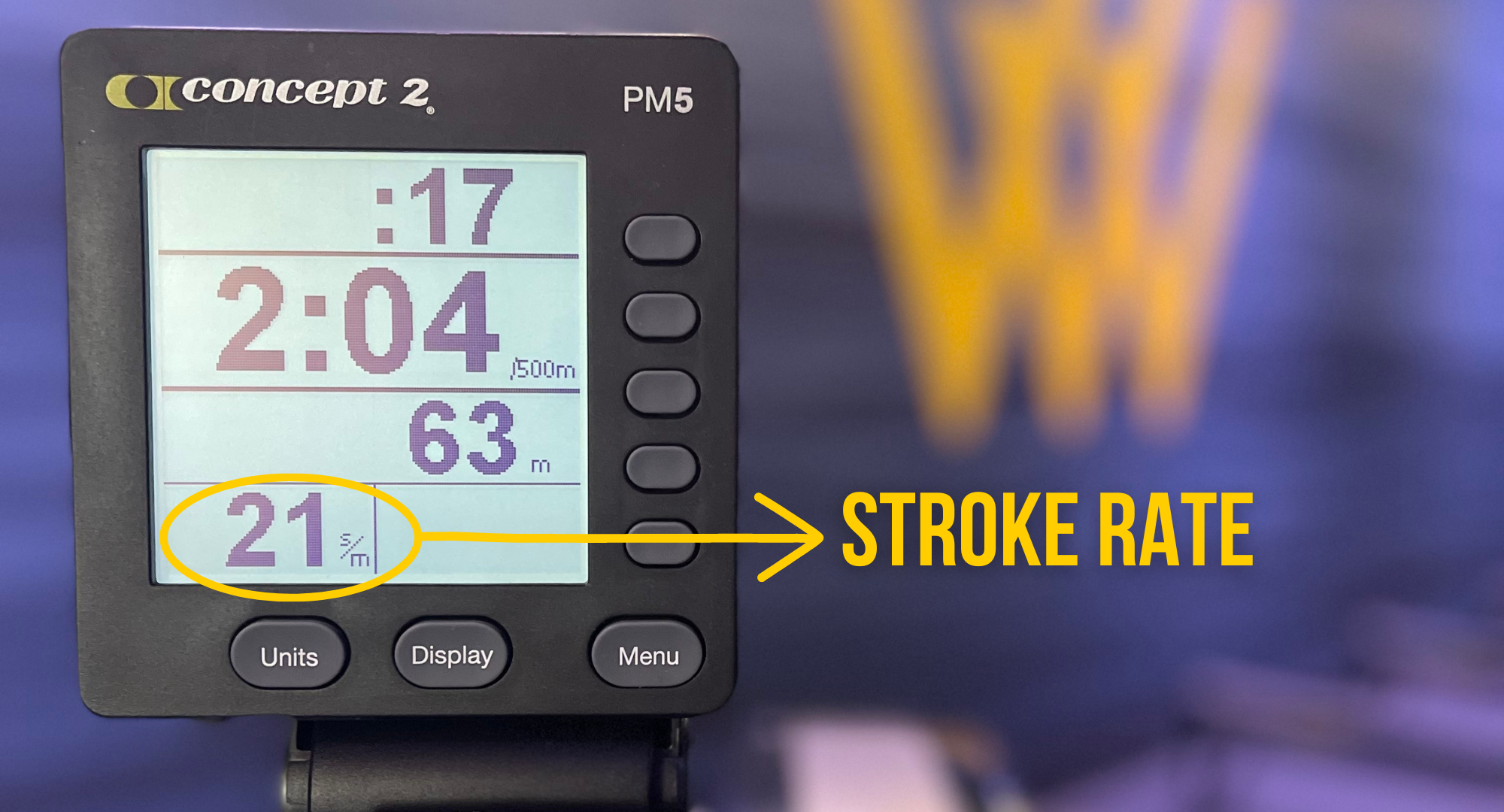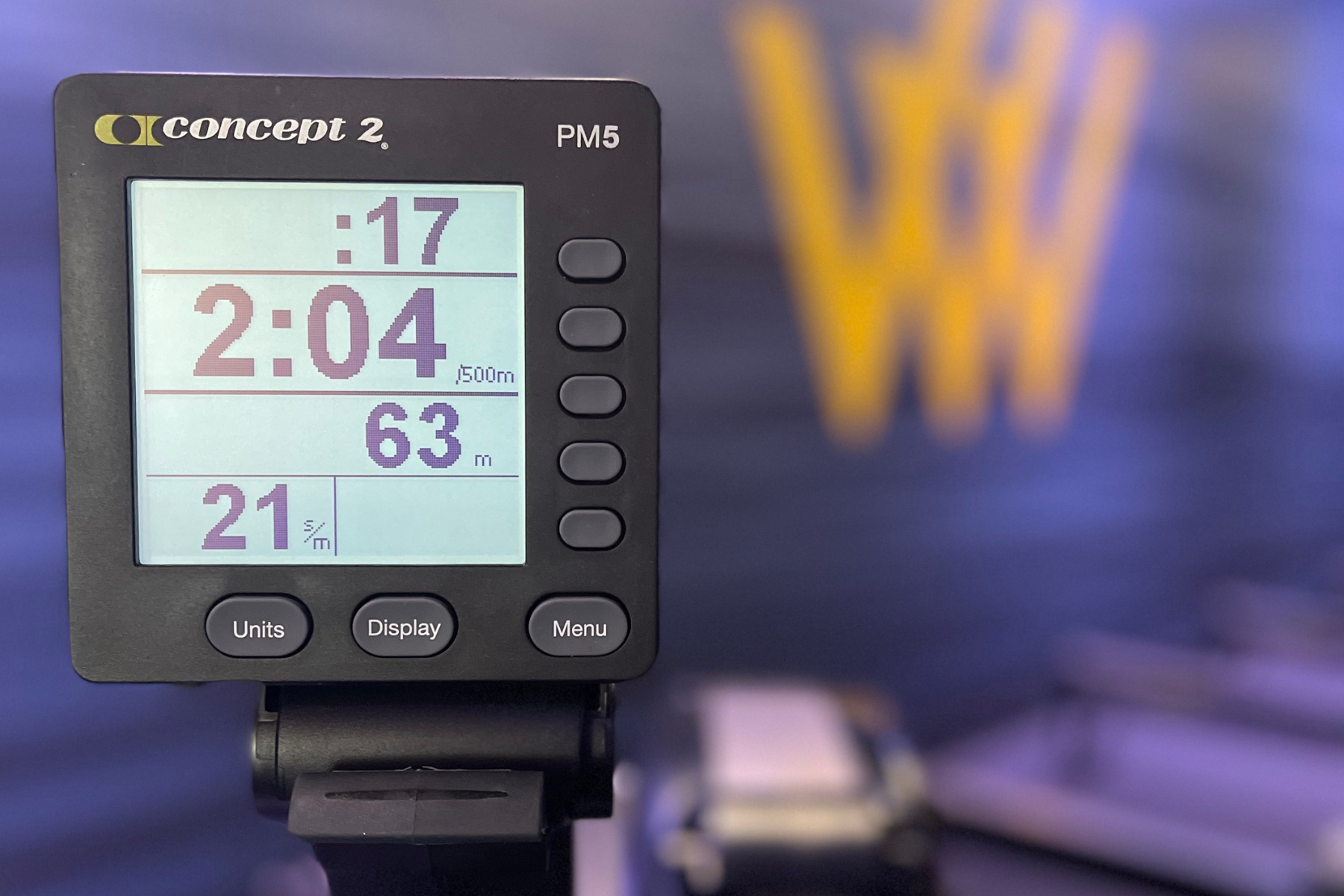By: Josh Ellenberg
Row House Cotswold Village, Coach
If you're looking for a workout that can help you improve your cardiovascular health, build strength, and burn calories, indoor rowing workouts may be the perfect option for you.
One of the great things about indoor rowing is that it allows you to track a variety of performance metrics, such as stroke rate, split time, average split, and distance, which can help you improve your technique and measure your progress over time.
You can optimize your workouts by keeping track of these metrics. Whether you're new to rowing or an experienced athlete, understanding these key metrics can help you take your indoor rowing to the next level.
STROKE RATE

The stroke rate is how many strokes you are taking per minute.
The way you control stroke rate is by controlling how fast you move on the slide. In other words, it’s how fast your seat is moving up and down on the rowing machine. The way you control stroke rate depends on how fast your drive is from the catch to the finish, and how slow your recovery is from the finish back to the catch.
At Row House, your stroke rate is often determined by the beat of the music.
A song with a slower beat often means the stroke rate will be lower, and vice versa. If you drive harder with the legs to add intensity and speed, you will have to come up slower on the slide to keep your stroke rate the same and stay on the beat. Thus, rowing is a great workout for the body and the mind, since you have to learn how to use precise coordination to stay on the music and stroke rate.
The proper technique of the rowing stroke is a quick drive and slower recovery.
In general, you will want to have a 1:2 or 1:3 drive-to-recovery ratio, meaning you would drive to the count of one and recover up the slide to the count of three. A common error is rushing up the slide, which creates inefficiency while rowing.
You can conserve energy and output more power by focusing on rowing at the correct ratio and learning how to use stroke rate to your advantage.
SPLIT
.png?width=2000&height=1080&name=STROKE%20RATE%20(1).png)
Your split is your pacing.
It shows you how long it would take you to row 500 meters, and gives you your real-time speed in the water if you were in a boat. It’s the same concept as tracking your pace when running a mile. In a running workout, your split could be 8 minutes per mile, for example. In rowing, your split could be 2 minutes per 500 meters.
Your split determines the intensity of the workout.
The lower your split, the higher the intensity. If you want to lower your split time and increase your intensity, take a look at increasing your stroke rate. The easiest way to lower your split time is to increase your stroke rate, but it's not necessarily the most effective way. The most effective way to build intensity is to learn how to properly increase your force/power applied to the drive portion of the stroke. How do you apply more force/power to the drive portion of the stroke? Connect through your core and drive harder with the legs.
Row House will let you know your best and average split for each class and overall meters in the Row House app.
The best split is great for tracking how you are doing on your sprint, power, and max efforts. The average split is great for gaining insight into how your pacing is throughout the class. One of the biggest challenges in class is coming off of a sprint effort and maintaining a 60-70% paddle effort, which can build great mental dexterity.
Your best and average split is great to keep in mind as your progress as a rowing athlete.
DISTANCE
.png?width=2000&height=1080&name=STROKE%20RATE%20(2).png)
One statistic that we celebrate often with Row House members is distance. Distance is how far you are rowing on the machine in meters.
The harder you row in class, the more meters you will accumulate overall. Members love to work hard to get their meters in. If distance is your primary goal, you can accumulate more meters by showing up to class more often and also choosing classes that involve more time on the rower.
You will see Row House celebrating distance milestones, such as 50k, 250k, 500k, and 1 million meters. These milestones can feel great once you reach them.
Distance milestones are a great metric that shows you put in work.
PULL IT ALL TOGETHER.
In conclusion, understanding and analyzing rowing statistics such as split time, stroke rate, and distance can greatly benefit you as an athlete in the sport.
By paying attention to your split time, you can gauge your speed and efficiency and make necessary adjustments to improve your performance. Similarly, monitoring your stroke rate can help you maintain consistency and avoid burnout during long races or training sessions. Tracking your distance over time can provide a benchmark for progress and improvement, motivating you to push harder and achieve your goals.
Overall, utilizing these statistics can help you become more knowledgeable, strategic, and successful in your rowing pursuits. Take your first class free today!

.png?width=600&name=Untitled%20design%20(32).png)

